Ancient Silk Road Exploration
History: 2,000 years
Length: 6,400 kilometer (4,000 miles)
Routes: China – Europe
Domestic Section: Xian – Dunhuang – Turpan – Urumqi – Kashgar
Goods of Trade: Silk, Tea, Spices, Gold, etc.
Countries Involved: China, Kazakhstan, Kyrgyzstan, Tajikistan, Uzbekistan, Turkmenistan, Afghanistan, Iran, Iraq, Turkey, Greece, and Italy.
Silk Road, also known as Silk Route, is the oldest and longest trade route in the world. Dating back to Han Dynasty (202 BC – 9 AD), ancient Silk Road is a 4,000-mile overland trade route stretching far from China to the Europe visa Central Asia, involving more than 10 countries including China, Kazakhstan, Kyrgyzstan, Tajikistan, Uzbekistan, Turkmenistan, Afghanistan, Iran, Iraq, Turkey, Greece, and Italy.
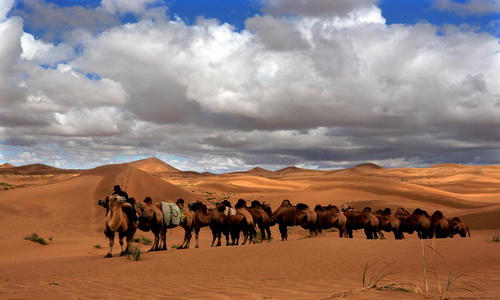
Originated from Chang'an (today's Xian), the capital of Han Dynasty, the Silk Road was firstly explored by traders and caravans for silk business as European nobilities were deeply obsessed with Chinese silk. For exchange, they brought back gold, silver, wool and spices to the east. Meanwhile, the great civilizations along the Silk Road were exchanged and affected by each other, too. Nestorian Christianity and Buddhism were introduced into China via the Silk Road then.
Most people get to know about the ancient Silk Road from the journals of Marco Polo, a brilliant traveler and explorer who embarked on an adventure to China through the Silk Road in Yuan Dynasty (1271–1368). The legendary travel experience of Marco Polo had greatly inspired westerners to retrace the ever-lost route, and now you have a chance to follow the caravan's footprint to discover the little-known hidden jewels scattered along the Silk Road in China as below.
- Xian - Starting point of China Silk Road
- Lanzhou – Diverse Buddhism Culture
- Zhangye – Home of the Rainbow Mountains
- Jiayuguan – First Pass of China Great Wall
- Dunhuang – Treasure House of Grottoes Art
- Urumqi – Amazing Alpine Landscape and Big Bazaar
- Turpan – Historical Ruins and Best Grapes
- Kashgar – Authentic Islamic Experience
As a prosperous capital city of 13 ancient China dynasties, Xian (old Chang'an) has been the starting point of the Silk Road since Han Dynasty. Abundant historical monuments are left to mirror the booming economy of the ancient China and the traces of the Silk Road. Nowadays, you could visit the Big Wild Goose Pagoda and learn about Xuanzang Monk's legendary journey to India via the Silk Road, or venture into the Shaanxi Provincial Historical Museum to check out of the gems and relics seeing the evolution of the trade route.
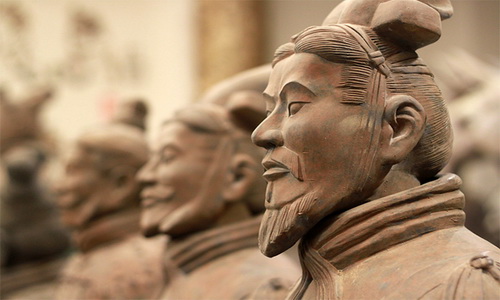
Moreover, do not hesitate to dive into the bustling Muslim Street to hunt for the halal gourmets influenced by the alien culture of Uyghur nationality. The awe-inspiring Terracotta Army of Qin Dynasty and the Ming City Wall would highlight your Silk Road odyssey trip further.
Lanzhou used to be an important stop of the Silk Road, and now it is still the major gateway city of northwest of China. With the Yellow River flowing through the city, Langzhou boasts a number of river-themed attractions such as Iron Bridge over Yellow River, Mother Statue and Waterwheel Park. In fact, Langzhou could show you more of its diverse culture and history just by short side trips outside the urban area.
The 1,600-year-old Bingling Temple would let you see one of China's most brilliant Buddhist grottoes arts, while the Labrang Monastery (one of the six largest Gelug Sect Tibetan Buddhism temples) in Xiahe allows you to dig into the Tibetan Buddhism with its world’s longest prayer wheel and amazing mural paintings. In addition, you could capture the exotic nomadic landscape and lifestyle with a summer visit to the captivating Sangke Grassland.
Zhangye is a small historical city hidden on the Silk Road, which could be easily reached by high-speed trains form Xian and Lanzhou. The biggest highlight of Zhangye would be the Danxia National Geological Park, the home of the staggering rainbow mountains.
Endowed with mind-boggling sandstones and conglomerates in red and yellow, the mountains stretch like the colorful belts under the sunset glow, which makes Zhangye one of the most spectacular photography destinations. Buddhist relics of the Giant Buddha Temple and Mati Temple offer great insights into Chinese religious wealth including marvelous Buddha statues, wall paintings and cliff carvings.
Jiayuguan is the city where you can have a lifetime Great Wall experience during a Silk Road trip. Jiayuguan (Jiayuguan Pass) is the westernmost point of the Great Wall in Ming Dynasty (1368AD-1644AD), which took about 160 years to accomplish this majestic outpost. Ascending the Gate Tower of Jiayuguan is a must-do, and you could explore the well-preserved city wall along with it.
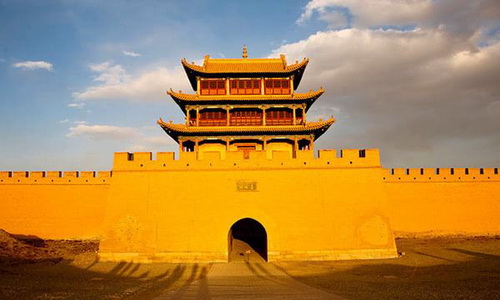
What Dunhuang has to offer is like no other in China. The historical Dunhuang had been an important oasis to traders and explorers on the Silk Road for millennia. Dunhuang is the well-known for its biggest and richest treasure, Maogao Caves, which showcase one of the most exquisite collections of Buddhist arts including the mural paintings and grottoes sculptures that you cannot find elsewhere in the country.
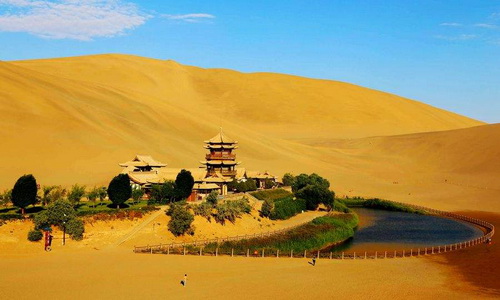
Besides, adjoining to the desert, Dunhuang is available for fascinating sand dunes and an oasis around the miraculous Crescent Lake. A camel ride across the desert would be a great way to experience the lifestyle of the old caravans.
Xinjiang is the largest province in China, and Urumqi is the capital city of the Uygur Autonomous Region. Deeply influenced by the trade on the Silk Road, now Xinjiang is still a fast-growing economic hub in Central Asia, where you could see a lot of foreign merchants from Russia, Arabia and Latin America. Urumqi boasts the biggest bazaar in the world, which rivals over the one in Istanbul.
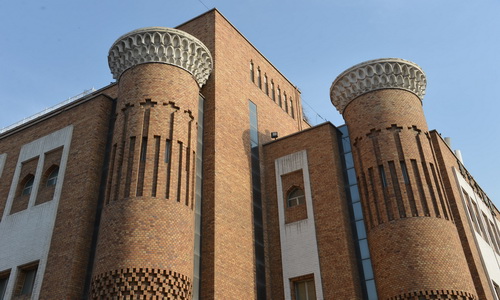
Tons of stalls and vendors are closely arrayed in the market, selling the most authentic Uygur staff like leather coat, teapots, silk wear, jades, vase, and musical instruments. Besides, Urumqi is blessed with unrivaled natural beauty around Tianshan Mountain where you can soak up the alpine steppe and forest similar to the picturesque landscape in Switzerland.
Known as Gaochang in ancient times, Turpan was a major stop on the northern route of the ancient Silk Road. Absorbing both the oriental and western civilizations, Turpan is a colorful place with abundant historical and religious sights, such as Jiaohe Ruins, Gaochang Ancient Towns, Bezeklik Thousand Buddha Caves and Astana Tombs.
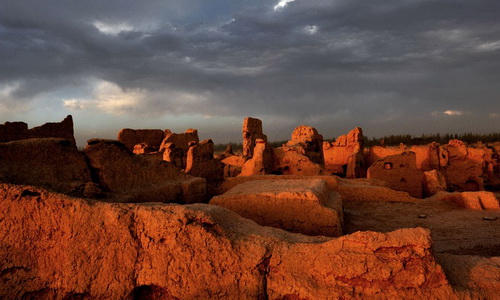
At 154m below sea level, Turpan is the second-lowest depression in the world and the hottest place in China. The famous Flamming Mountain is located in the region, and the highest temperature could rocket up to 47.8 (118℉). However, the hot and dry climate makes Turpan the best base for grapes across the country.
Located in the western end of China, Kashgar is meeting point of the southern and northern Silk Routes, and also the transportation hub and gateway for China's economic and cultural exchanges with the Europe. The soul of Kashgar lies in its old town area, where a number of earth constructions are crisscrossed by maze-like narrow alleyways. The old streets, residences, restaurants and bazaar markets are great places to take in the authentic Islamic spirits.
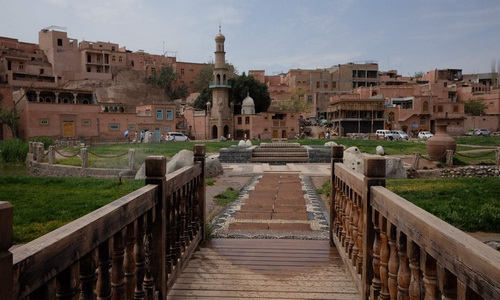
The city's Sunday livestock market shall be a fascinating spot for your insights into their local life. Furthermore, check outs historical monuments like Abakh Hoja Tomb and Id Kah Mosque as well.
As a World Heritage site across Asia and Europe, the Silk Road had witnessed a lot of traders and caravan’s epic journeys in ancient times. Now you could follow Macro Polo’s footsteps to chase after their adventurous spirit and wonder at the diverse landscapes ranging from the otherworldly rainbow mountain of Danxia landform and picturesque sand dunes of the desert to boundless grassland.
Moreover, a Silk Road tour enables you to discover the splendid alien culture and religions of Han people, Uyghur and Tibetan minorities by visiting the rich historical sites including the Buddhist grottoes, temples, monasteries and mosques as well as lively local bazaar. Bonus experiences like the discovery of the incredible Terracotta Army and camel ride in Dunhuang would enrich the journey with more fun and wows.
Recommended Tour Package: Trace of Ancient Silk Road.
Best Time for a Trip
The best time to pick up a Silk Road journey is from May to October. With an average temperature of 15 °C, the weather is really enjoyable in late spring when flowers are carpeted on the green and vast prairie.
Summer could a bit harsh as the temperature climbs drastically, but you have a chance to indulge in the scent of ripen fruits especially in Xinjiang where grapes, pears and hami melons are massively planted. Cool and dry, autumn is the most ideal season to trace the ancient Silk Road. You can expect clear skies and blazing autumn foliage.
Weather and Wear
The Silk Road reaches deep into the northwest of China, snaking through the flatlands, desert and mountains. There is a large possibility of extreme weather in winter and summer. Winter is usually long and bitterly cold, and you are supposed to wear down jackets, thick pants and snow boots.
The summer in China northwest is a bit harsh, and the temperature could soar over 40 °C. Hats, sunglasses and sunblock are must-have items to protect your from sunburn. A light coat added on a basic shirts are okay with the spring and autumn, but you are suggested to pack layers of clothes as the temperature difference is huge between day and night.
Length of Travel
At least 5 days are needed for a Silk Road adventure that covering the popular cities like Xian and Dunhuang. For a real Silk Road tract, you shall need 12-15 days to cover all the major destinations including Lanzhou, Zhangye, Turpan, Urumqi and Kashgar.
Local Taboos and Customs
There are a great number of Muslims inhabiting along the Silk Road, and you are likely to visit some historical and religious sites like mosques or Buddhist monasteries. You shall not wear clothes that reveal too much particularly when you enter a mosque.
Transportation
Railways could lead travelers to most travel destinations on the Silk Road, but you may need to have some overland bus journeys. Especially in Xinjiang, the largest province of China, sometimes you may ride on a vehicle for long hours, and the road condition is not always as good as that in China eastern cities. If going with Elysian Tour, you would be served by air-conditioned van with experienced drivers, and stops would be flexibly made for you to take a break.
Food on the Silk Road
The best food choice on a Silk Road trio would be halal food. In Xian, most famous dishes like Crumbled Flatbread in Mutton Stew (Yangrou Paomo) are in Muslim style, and the best and most popular snacks could be found in the Muslim Street. In Zhangye, Dunhuang, Xinjiang, you probably would encounter a lot of halal restaurants serving beef, mutton and noodles, too, while green veggies are limited and of high price.









